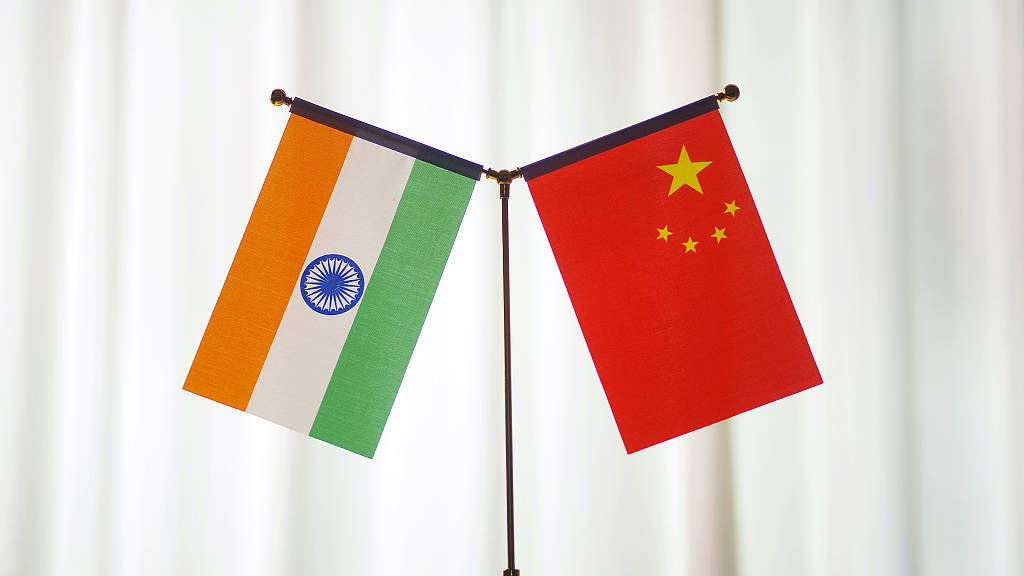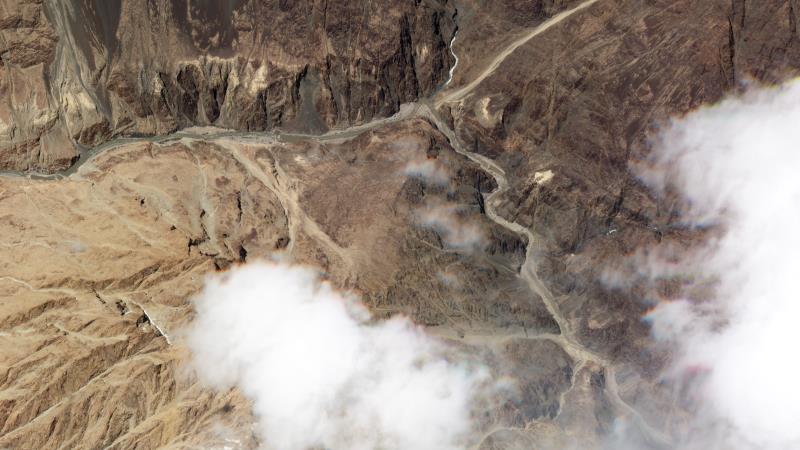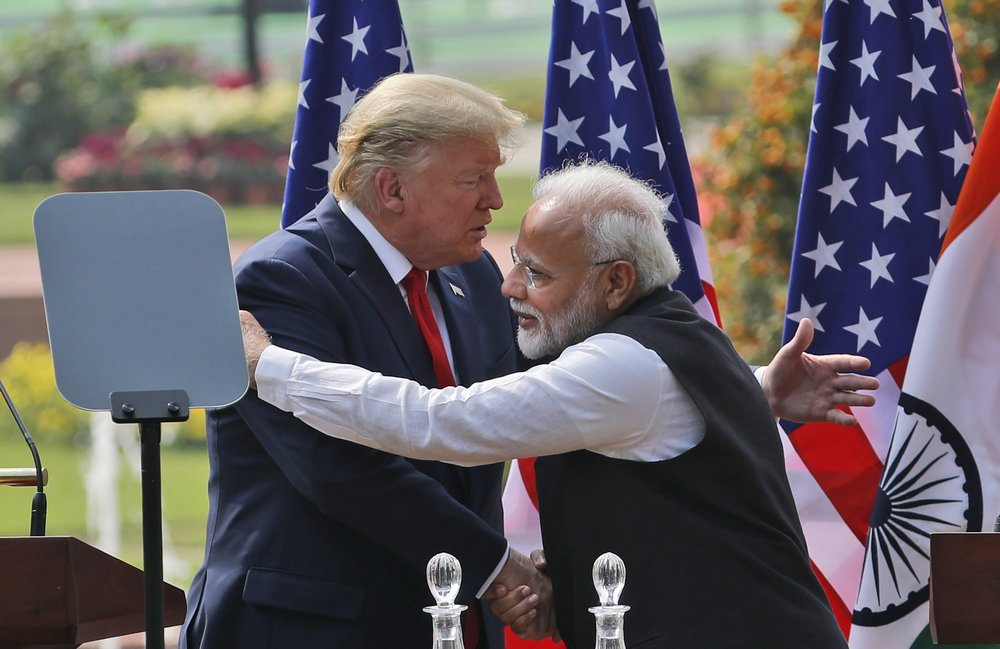
Editor's note: Zhou Bo is a senior fellow at the Centre for International Security and Strategy, Tsinghua University, and a China Forum expert. The article was first published by The Strait Times on August 5, 2020. The article does not necessarily reflect the views of CGTN.
On June 1, 2018, I was invited by the International Institute for Strategic Studies (IISS), the organizer of the Shangri-La Dialogue, to speak at a special session entitled Competition and Cooperation In China-India Relations, right before Indian Prime Minister Narendra Modi's keynote speech. The other panelist was Ram Madhav, the national general secretary of the Indian Bharatiya Janata Party.
I was surprised to find how we both focused on cooperation rather than competition as if the different speeches were written by the same person.
But what happened on June 15 this year at Galwan Valley along the Line of Actual Control (LAC) between China and India is a far different story. Following tense military standoffs since April, a brawl involving fists, rocks and wooden clubs between Chinese and Indian soldiers left 20 Indian servicemen dead.
Without mentioning the number of its own casualties, China stressed that the Galwan Valley was located on the Chinese side of the LAC. It added that the brawl's trigger was trespassing by Indian border troops into China's territory to build fortification and barricades.
The Indian side claims it was the Chinese who were the trespassers.

A satellite photo released by Planet Labs, shows the reported site of a fatal clash between Indian and Chinese troops in the Galwan River Valley in the Ladakh region near the Line of Actual Control, BKalong their disputed border high in the Himalayas, June 18, 2020. /AP
A root cause of the problem is the fuzzy nature of the LAC. It is not surprising then that boundary disputes have flared up on several occasions since the 1980s, although none has been as deadly as the June encounter.
It's fair to say both governments have made great efforts to avoid conflict. Since 1993, at least five border agreements have been made, both at governmental and military levels, toward this end. But as always, the challenge remains the lack of a commonly agreed LAC. For example, the 1993 Agreement stated, “No activities of either side shall overstep the Line of Actual Control. In case personnel of one side cross the Line of Actual Control, upon being cautioned by the other side, they shall immediately pull back to their own side.”
But how could they pull back to their side of the LAC if they don't even know where the line actually lies?
Two different approaches
Such a Catch-22 situation is, in part, the result of the different approaches taken by China and India to resolve the border problem. Beijing's way is to propose that both sides should, as a starting point, agree to the general principle of mutual accommodation of the disputed territories before verifying the alignment of the LAC; New Delhi's approach is more bottom-up, that is, to verify the LAC first before talking about anything else.
Seen from the perspective of opposing approaches, it explains why so far negotiations over LAC have made little headway.
Similarly, it explains why New Delhi has shown no interest in negotiations, say, over Arunachal Pradesh that is already under India's control, but claimed by Beijing as Chinese territory.
The only achievement seems to be a tacit understanding to not shoot at each other under any circumstances.
As Modi noted in an interview with the Hindustan Times two years ago, “Over the last four decades, not a single bullet has been fired across the India-China border.”
But if the intent of the “no shooting” guideline is to avoid escalation to a deadly conflict, then the fatal Galwan Valley episode has greatly undermined that understanding. It is sad to see the two largest armed forces in Asia, in an attempt to avoid shooting, turn instead to the most primitive methods of fistfights and stone-throwing. Ironically, the soldiers involved could very well have been the same people who in the past have happily joined the other side for national day or armed forces day celebrations, despite the border disputes.
The incident provides a chance to reconsider what measures both have to take to avoid conflicts. This might include keeping a safe distance from each other, not building facilities on territories taken by the other side as its own and establishing hot lines between their military commands that are critical in a crisis.
Chinese views on India
What are the takeaways and bigger issues raised by the deadly brawl in Galwan Valley?
For Beijing, it is the latest of recent incidents that leaves it wondering about India's changing attitudes towards China and where the growing animus might lead.
Prior to this, there was the 2017 military stand-off over the Chinese construction of a road in Doklam near a trijunction border area, known as Donglang in Chinese. Even if India believes Doklam is Bhutanese rather than Chinese territory as China claims, it should not step into a face-off with China on foreign territory.
When asked what lessons India might learn from the Doklam stand-off that lasted 73 days, then Indian Defence Minister Arun Jaitley said, “India of 2017 is different from India of 1962.”
The Chinese spokesman's pithy reply, “So is China.”
The related question is to what extent will the India side with the United States, which has clearly marked China as its primary strategic competitor?

U.S. President Donald Trump and Indian Prime Minister Narendra Modi embrace after giving a joint statement in New Delhi, India, February 25, 2020. /AP
Although Delhi is said to pursue a foreign policy of non-alliance, it has in recent years been shifting ever closer to the U.S. India is part of the “Quad” – a group that includes the U.S., Australia and Japan. None of the Quad members would admit it is against China, but their promotion of a free and open Indo-Pacific is a thin veil of their true intent.
At the Raisina Dialogue in New Delhi in January last year, a Chinese scholar asked the Indian panelists if, indeed, the Indian-Pacific was free and open, could Quad accept China as a member? The response is a burst of laughter from the audience.
So, China has to ask itself, if the U.S. grows ever more hostile, how will the Quad evolve? And what role will India play in it?
Some Indian strategists have long suggested that China wants to “encircle” India from the border in North and the Indian Ocean in South and perhaps, with the help of Pakistan. Such worries, fueled by a concern that China may eventually establish “a string of pearls” of military bases in the Indian Ocean, have grown particularly wild after the Chinese navy started anti-piracy patrols in the Gulf of Aden and the Somali Basin at the end of 2008.
There is no need for China to encircle India. China's economy is five times larger than India's. Unlike the Indian defense industry, the Chinese defense industry is capable of indigenously producing almost everything the People's Liberation Army (PLA) wants. In terms of the overall military strength, the PLA that is trying to catch up with the U.S. can only leave the Indian military further behind.
The string of pearls was particularly well-received in the Indian media. But 15 years after the term was first coined, in 2005, the much-hyped garrote is nowhere to be seen. There is just one Chinese logistic base in Djibouti, and that was built in 2017, in support of its counter-piracy operations in the Indian Ocean.
Both China and India describe themselves as developing countries. For China, no objective is more aspirational than realizing “the great rejuvenation of the Chinese nation.” This, described as “China dream,” is similar to the Modi government's “New India” blueprint. It is also interesting to see China's Belt and Road Initiative go west, while India's Act East plan extends to the east.
The brawl in the Galwan Valley is unfortunate, but it should not be seen as some kind of watershed that redefines China-India ties for the worse. Rather, it works better as a useful reminder: Before the dragon and the elephant figure out a way to stay in the same room, the art of co-existence is to keep a safe distance.
(If you want to contribute and have specific expertise, please contact us at opinions@cgtn.com.)
